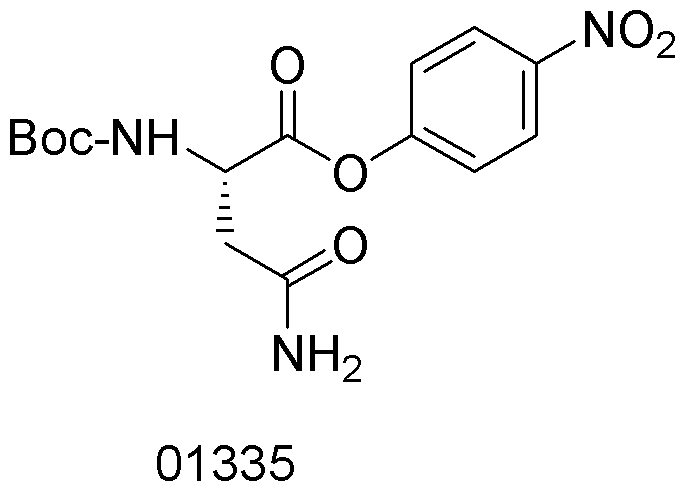Na-Boc-L-asparagine 4-nitrophenyl ester is widely utilized in research focused on:
- Peptide Synthesis: This compound serves as a key building block in the synthesis of peptides, allowing researchers to create complex molecules for drug development and biological studies.
- Bioconjugation: It is used in bioconjugation processes, where it helps attach biomolecules to surfaces or other molecules, enhancing the functionality of drugs and diagnostics.
- Fluorescent Probes: The ester can be modified to create fluorescent probes, which are essential in imaging techniques for studying cellular processes in real-time.
- Enzyme Inhibition Studies: Researchers utilize this compound to investigate enzyme activity and inhibition, providing insights into metabolic pathways and potential therapeutic targets.
- Drug Delivery Systems: Its unique properties make it suitable for developing advanced drug delivery systems, improving the efficiency and specificity of therapeutic agents.
General Information
Properties
Safety and Regulations
Applications
Na-Boc-L-asparagine 4-nitrophenyl ester is widely utilized in research focused on:
- Peptide Synthesis: This compound serves as a key building block in the synthesis of peptides, allowing researchers to create complex molecules for drug development and biological studies.
- Bioconjugation: It is used in bioconjugation processes, where it helps attach biomolecules to surfaces or other molecules, enhancing the functionality of drugs and diagnostics.
- Fluorescent Probes: The ester can be modified to create fluorescent probes, which are essential in imaging techniques for studying cellular processes in real-time.
- Enzyme Inhibition Studies: Researchers utilize this compound to investigate enzyme activity and inhibition, providing insights into metabolic pathways and potential therapeutic targets.
- Drug Delivery Systems: Its unique properties make it suitable for developing advanced drug delivery systems, improving the efficiency and specificity of therapeutic agents.
Documents
Safety Data Sheets (SDS)
The SDS provides comprehensive safety information on handling, storage, and disposal of the product.
Product Specification (PS)
The PS provides a comprehensive breakdown of the product’s properties, including chemical composition, physical state, purity, and storage requirements. It also details acceptable quality ranges and the product's intended applications.
Certificates of Analysis (COA)
Search for Certificates of Analysis (COA) by entering the products Lot Number. Lot and Batch Numbers can be found on a product’s label following the words ‘Lot’ or ‘Batch’.
*Catalog Number
*Lot Number
Certificates Of Origin (COO)
This COO confirms the country where the product was manufactured, and also details the materials and components used in it and whether it is derived from natural, synthetic, or other specific sources. This certificate may be required for customs, trade, and regulatory compliance.
*Catalog Number
*Lot Number
Safety Data Sheets (SDS)
The SDS provides comprehensive safety information on handling, storage, and disposal of the product.
DownloadProduct Specification (PS)
The PS provides a comprehensive breakdown of the product’s properties, including chemical composition, physical state, purity, and storage requirements. It also details acceptable quality ranges and the product's intended applications.
DownloadCertificates of Analysis (COA)
Search for Certificates of Analysis (COA) by entering the products Lot Number. Lot and Batch Numbers can be found on a product’s label following the words ‘Lot’ or ‘Batch’.
*Catalog Number
*Lot Number
Certificates Of Origin (COO)
This COO confirms the country where the product was manufactured, and also details the materials and components used in it and whether it is derived from natural, synthetic, or other specific sources. This certificate may be required for customs, trade, and regulatory compliance.


